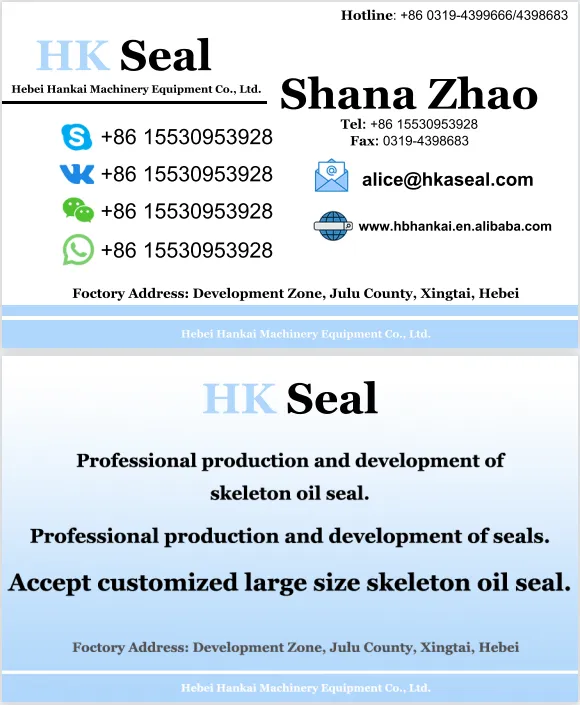نومبر . 17, 2024 23:39 Back to list
Understanding the Function and Benefits of Cylinder Wiper Seals in Hydraulic Systems
Understanding Cylinder Wiper Seals Essential Components in Hydraulic Systems
Cylinder wiper seals play a crucial role in the performance and longevity of hydraulic systems. These sleek yet robust components are designed to prevent contaminants from entering hydraulic cylinders while simultaneously keeping the hydraulic fluid contained within. Understanding their function, design, and maintenance can significantly enhance the reliability and efficiency of hydraulic machinery.
Hydraulic systems are widely used in various industries, from construction and manufacturing to aerospace and automotive. At the heart of these systems are hydraulic cylinders, which convert hydraulic energy into mechanical force. However, the efficiency of these cylinders can be compromised by external contaminants such as dirt, dust, and moisture. This is where cylinder wiper seals come into play.
Wiper seals are typically installed at the outer boundary of the cylinder, where the piston rod extends and retracts. Their primary function is to wipe away debris from the rod’s surface, thereby preventing it from entering the cylinder. This not only preserves the integrity of the hydraulic fluid but also minimizes wear and tear on the internal components of the hydraulic system. An effective wiper seal is essential for maintaining a clean environment for the operation of the cylinder.
cylinder wiper seal

In terms of design, cylinder wiper seals are made from a variety of materials, including rubber, polyurethane, and PTFE (polytetrafluoroethylene). The choice of material depends on several factors such as the working environment, temperature range, and the type of fluid used in the system. For instance, in high-temperature applications, PTFE may be preferred due to its excellent thermal resistance. Alternatively, polyurethane seals offer superior wear resistance, making them ideal for applications subjected to abrasive contaminants.
Installation and maintenance of cylinder wiper seals are critical to their effectiveness. A proper installation ensures a snug fit, which is vital for optimal functioning. If a seal is incorrectly installed, it can lead to leaks and increased exposure to contaminants. Regular maintenance, including visual inspections and replacing worn-out seals, can prevent potential failures and extend the overall life of the hydraulic system.
Incorporating effective wiper seals into hydraulic systems not only boosts performance but also reduces operational costs. By preventing contamination, organizations can experience less downtime and lower repair costs. Additionally, maintaining clean hydraulic fluid ensures that the entire system operates smoothly, leading to improved efficiency and productivity.
In conclusion, cylinder wiper seals are more than just protective components; they are vital to the maintenance and efficiency of hydraulic systems. Understanding their functions, selection, and maintenance is essential for anyone involved in industries reliant on hydraulic technology. By prioritizing the quality and upkeep of these seals, businesses can ensure their hydraulic systems operate reliably and efficiently, safeguarding their investment in machinery and equipment.
-
The Trans-formative Journey of Wheel Hub Oil Seals
NewsJun.06,2025
-
Graphene-Enhanced Oil Seals: Revolutionizing High-Pressure Oil Sealing
NewsJun.06,2025
-
Future of Hydraulic Sealing: Advanced Intelligent TCN Oil Seals
NewsJun.06,2025
-
Don’t Let a Broken TCV Oil Seal Ruin Your Day
NewsJun.06,2025
-
Bio-Inspired Dust Seals for Better Sealing Performance
NewsJun.06,2025
-
Biodegradable and Sustainable Hydraulic Seal Materials
NewsJun.06,2025
-
Top Oil Seal Solutions for Your Industrial Needs
NewsMay.22,2025
Products categories
















